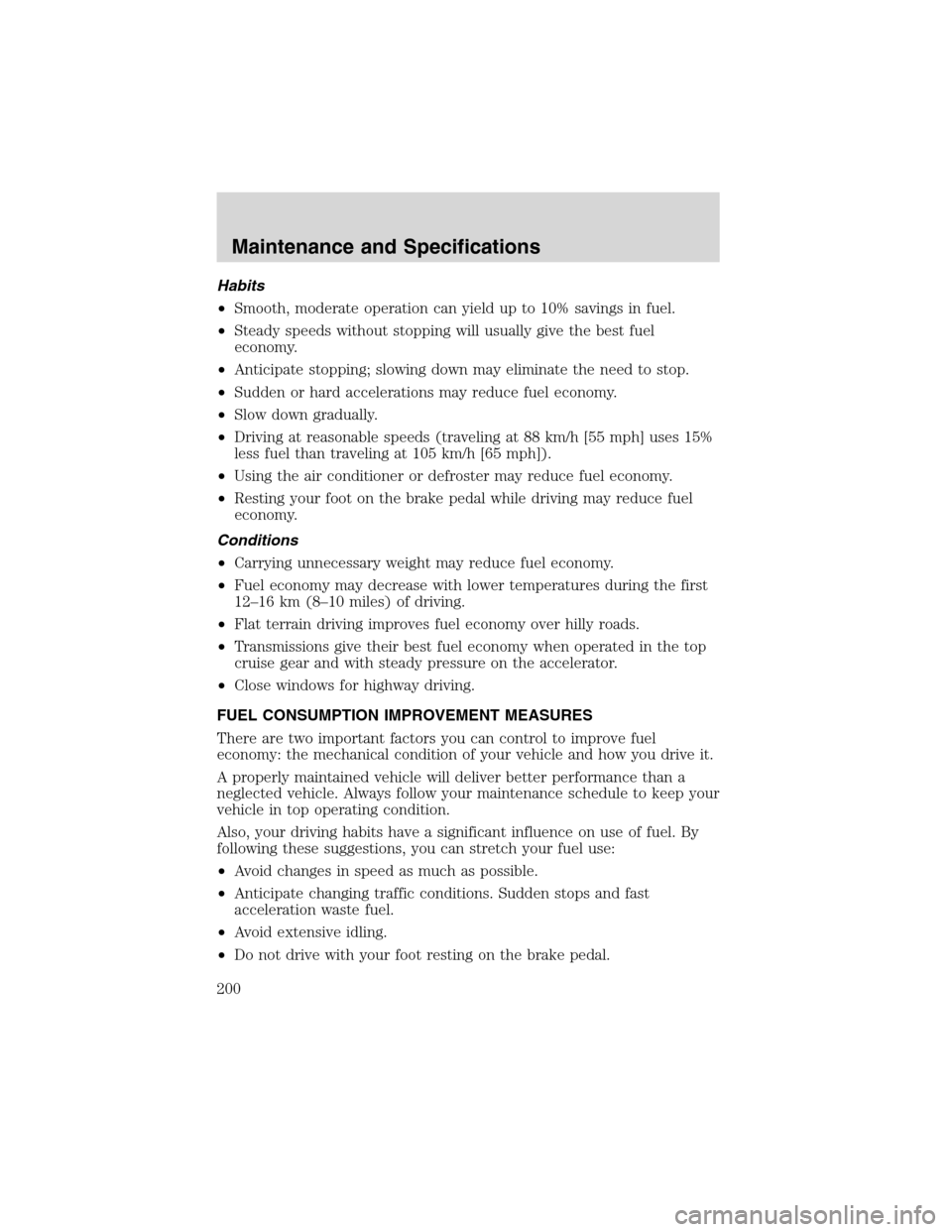Page 77 of 248
Caterpillar/Cummins engines
Press CRUISE RPM. If the vehicle is
moving, speed control will be
enabled; if the vehicle is stationary,
engine RPM can be controlled.
Do not use the speed
control in heavy traffic or
on roads that are winding,
slippery, or unpaved.
To turn speed control off
7.3L Power Stroke engine
•Press OFF or
•Turn off the vehicle ignition.
Once speed control is switched off,
the previously programmed set
speed will be erased.
Caterpillar/Cummins engines
•Press OFF or
•Turn off the vehicle ignition.
Once speed control is switched off,
the previously programmed engine
RPM will be erased.
Do not use the speed
control in heavy traffic or
on roads that are winding,
slippery, or unpaved.
CRUISE
RPM
OFF
CRUISE
RPM
OFF
Driver Controls
77
Page 81 of 248
7.3L Power Stroke engine
Pressing OFF will erase the
previously programmed set speed.
Caterpillar/Cummins engines
Pressing OFF will erase the
previously programmed engine RPM.
To return to a previously set speed
7.3L Power Stroke engine
•Press RES. For RES to operate,
the vehicle speed must be faster
than 48 km/h (30 mph).
Caterpillar/Cummins engines
Press RESUME -. For RESUME - to
operate, the vehicle speed must be
above 48 km/h (30 mph) or engine
speed must be above 1 000 RPM.
CRUISE
RPM
OFF
RES
SET
ACCEL
COAST
SET
RESUME
Driver Controls
81
Page 200 of 248

Habits
•Smooth, moderate operation can yield up to 10% savings in fuel.
•Steady speeds without stopping will usually give the best fuel
economy.
•Anticipate stopping; slowing down may eliminate the need to stop.
•Sudden or hard accelerations may reduce fuel economy.
•Slow down gradually.
•Driving at reasonable speeds (traveling at 88 km/h [55 mph] uses 15%
less fuel than traveling at 105 km/h [65 mph]).
•Using the air conditioner or defroster may reduce fuel economy.
•Resting your foot on the brake pedal while driving may reduce fuel
economy.
Conditions
•Carrying unnecessary weight may reduce fuel economy.
•Fuel economy may decrease with lower temperatures during the first
12–16 km (8–10 miles) of driving.
•Flat terrain driving improves fuel economy over hilly roads.
•Transmissions give their best fuel economy when operated in the top
cruise gear and with steady pressure on the accelerator.
•Close windows for highway driving.
FUEL CONSUMPTION IMPROVEMENT MEASURES
There are two important factors you can control to improve fuel
economy: the mechanical condition of your vehicle and how you drive it.
A properly maintained vehicle will deliver better performance than a
neglected vehicle. Always follow your maintenance schedule to keep your
vehicle in top operating condition.
Also, your driving habits have a significant influence on use of fuel. By
following these suggestions, you can stretch your fuel use:
•Avoid changes in speed as much as possible.
•Anticipate changing traffic conditions. Sudden stops and fast
acceleration waste fuel.
•Avoid extensive idling.
•Do not drive with your foot resting on the brake pedal.
Maintenance and Specifications
200
Page 243 of 248

A
Air cleaner filter .......................206
Air conditioning
manual heating and air
conditioning system .................57
Audio system
(see Radio) ................20, 25, 32, 40
Automatic transmission ............132
Auxiliary power point .................73
B
Battery .......................................184
jumping a disabled battery ....165
voltage gauge ............................17
BeltMinder ...................................96
Brakes ................................113, 119
anti-lock ...................114–115, 121
anti-lock brake system
(ABS) warning light ...11–12, 115
brake warning light ............11–12
fluid, checking and adding ....203
parking ....................116, 118, 122
pedals (see Power
adjustable foot pedals) ............73
trailer .......................................124
C
CD-6 disc .....................................40
CD-single premium .....................32
Child safety restraints ..............101
child safety belts ....................101
Child safety seats ......................104
attaching with tether straps ..108
in front seat ............................106
in rear seat ..............................106
tether anchorage hardware ...108Cleaning your vehicle
engine compartment ..............175
exterior ....................................177
instrument panel ....................176
interior .....................................176
plastic parts ............................176
washing ....................................174
waxing .....................................174
wheels ......................................175
woodtone trim ........................176
Climate control (see Air
conditioning or Heating) ......56–57
Clock ..........................23, 29, 36, 44
Clutch ........................................202
fluid ..........................................202
Compass, electronic ....................70
calibration .................................72
set zone adjustment .................71
Console
overhead ....................................70
Controls
power seat .................................89
Coolant ......................................186
refill capacities ........................190
Cruise control
(see Speed control) ....................76
Customer Assistance ................150
Getting assistance outside
the U.S. and Canada ..............171
Getting roadside assistance ...150
Getting the service
you need .................................166
Ordering additional
owner’s literature ...................172
The Dispute Settlement
Board .......................................168
Index
243